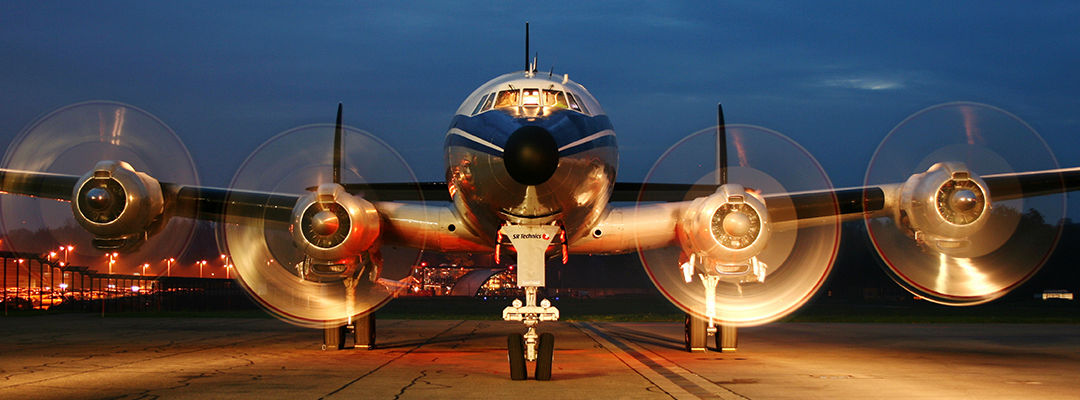Despite the gradual slowing of the global economy, with geopolitical tension and uncertainty on the rise, and continued shortcomings and public scrutiny with commercial aircraft production, the Aerospace and Defense (A+D) industry is expected to recover appropriately from its apparent decline in 2019. With U.S. employment being incredibly strong and consumer demand and spending high, along with other critical economic and political factors at play, many experts anticipate A+D to return to its prior trajectory of growth, this year, towards becoming a $1.6 trillion global industry by 2025 (CAGR of 3.5%). S&P Global anticipates a fairly stable credit quality for A+D, with some risks centered on further delays of the 737 MAX return to service, supply chain issues tied to the ongoing Brexit debacle, and a continued slowing of the global economy due to growing global tension and trade wars. Of course, there are several other important factors and trends to watch for this year, but the general long-term consensus remains positive.
“This is history in the making, and we aren’t done yet.”
David Abney, CEO, UPS
Here are some of the most essential things to know in 2020:
Commercial
No other event has disrupted the commercial aerospace market more than the grounding of the 737 MAX and the impacts are being felt through the broader supply chain. Continued scrutiny, production issues, cancellations, and declines in orders have dramatically slowed growth. However, this has also led to a decline in the backlog of commercial aircraft orders from peak levels in 2018. Longer-term demand for commercial aircraft and innovative technologies, in automation and connectivity, will continue to support the segment as it recuperates, with Deloitte estimating the production of 40,000+ units over the next 20 years. During that same period, some 5,000+ regional jets will be required to meet the increasing demand for geographically centric solutions, primarily in the Asian-Pacific, Middle East, and Latin America.
The aftermarket space continues to develop and broaden the overall commercial aircraft value chain, driving many businesses, including OEMs to seek out strategic partnerships and to diversify through establishing new lines of business. Rises in oil prices, along with environmental concerns, continue to increase demand for “next generation” aircraft with more fuel-efficient or alternative energy profiles, leading to further growth in the commercial space.
UAVs
With the FAA working quickly to address new rules and regulations and an accelerated pace for the development of multiple applications and lines of business, both the defense and commercial drone markets are on the rise—expected to triple to more than $100 billion over the next three years. Much of this growth will spawn from a variety of recent market disruptions. For example, UPS Flight Forward has just recently received the FAA’s first full approval (Part 135 Standard certification) for a drone airline. “This is history in the making, and we aren’t done yet,” said David Abney, UPS Chief Executive Officer, “Our technology is opening doors for UPS and solving problems in unique ways for our customers. We will soon announce other steps to build out our infrastructure, expand services for healthcare customers and put drones to new uses in the future.” Wing, an Alphabet company (Google’s parent company), Uber, and Amazon are also pushing heavily on global and domestic stakeholders and businesses to help foster the coming revolution in UAV technology and delivery services, especially here in the United States.
Defense
Global defense spending continues to increase (CAGR of 3%) as the U.S. and other regional powers, including China, Russia, and India, seek to strengthen and modernize their military capabilities in the face of growing security threats and geopolitical instability. Utilizing SIPRI military expenditure data, Deloitte estimates a 3 to 4 percent growth in defense expenditures for the U.S. in 2020, accounting for an estimated $1.9 trillion total budget. The increased demand for defense equipment and services will remain a significant opportunity for defense contractors to fuel their growth. However, those that take an agile approach to production, one that will allow for improved production yields and rapid adaptation to demand, including the development and utilization of digital technologies, will prove to have the upper hand in sustaining that growth over the long term.
Space
Recent growth in the global commercial space sector, supported by government funding and venture capital, is anticipated to continue with further innovation and modernization of space technology. After financing for private space companies took a dip in 2018, last year saw some $3 billion invested in space start-ups. However, the observable growth impacts of these investments will be rather insignificant over the next several years and only become more apparent toward the latter part of the coming decade, as companies move beyond research and development to establish reliable proofs of concept, and begin to move to full-on commercialization rollouts of products and services.
Many governments are also reconsidering and revamping their military space programs and capabilities to address growing concerns around anti-satellite (ASAT) weapons, especially as smaller satellites (“smallsats”) are increasingly replacing the larger-scale, higher-altitude legacy satellites—all following a 2018 FCC approval for the deployment of over 5,000 smallsats to provide broadband communication services. Getting all those smallsats into orbit is no small task and is one which 40+ U.S. companies are working tirelessly to support through the development of state-of-the-art launch systems. This, all while NASA struggles to find its way back to the moon by 2024 as it announced early last year.
ABOUT THE FIRM AND THE AUTHOR

McDermott + Bull is leading the way in transforming recruitment services worldwide, one relationship at a time. Leveraging deep vertical experience, innovative thinking, and proven time-saving methodologies, we challenge the norm and thrive in the recruitment of difficult-to-find executive talent. Operating on a global level, our fast-growing Aerospace + Defense (A+D) Practice serves leading companies in aerospace and defense, general, and commercial aviation. We offer a personalized service model with the resources and capabilities of the world’s largest search firms.
Jason Levi Pinegar serves as a Managing Director for McDermott + Bull’s growing Aerospace + Defense Practice, working closely with his clients to attract and secure game-changing leadership talent. He brings valuable knowledge and competence as an accomplished business consultant, with prominence in leadership development and managing organizational change, having served a variety of public/private companies and nonprofit organizations throughout the United States.

